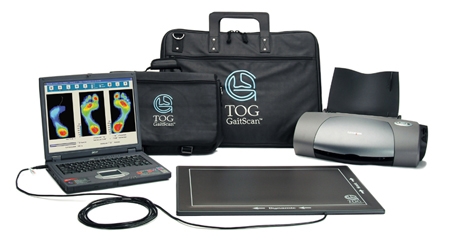TOG GaitScan / Orthotics
|
The Foot - Body Connection A relaxed, fun and informative presentation ideal for anyone interested in understanding how their foot type can be the underlying cause of problems like bunions, lowered arches, shin splints, knee pain, osteoarthritis, recurring injuries and back pain. From the Bottom Up Traditionally, the identification and assessment of musculoskeletal disorders and imbalances is undertaken from the top-down, with the inherent assumption that there exists a stable foundation. When we treat a person who has an unstable foundation from the top down, we will spend so long trying to alleviate or control the symptoms present throughout the rest of the body that we rarely, if ever get to discover the true root cause of the problem. As a result, the problems never go away; pain and dysfunction will invariably always affect different parts of the body at different times and at varying degrees of severity. If the root cause of the problem is not identified and treated, the same or other problems will return in the future. This is even true after surgery. This scenario underpins the very heart of the problem we currently have in understanding the cause of and successfully treating recurrent injuries, chronic pain, and degenerative diseases such as osteoarthritis.
TOG GaitScan The GaitScan, is one of the most technologically advanced gait analysis tools on the market. Not only does it incorporate a digital pressure plate scanner with an industry high 4096 sensors and scans at an industry high 125 Hz(scans per second), but the scanning technology is unique in which the data is transferred from the gait scan into a prescription for orthoses (if needed). As with all products in the digital gaitscanning family, the fantastic graphics and colorful instant reports make patient education interesting and effective. 
Static Assessment - understanding how your feet distribute your weight provides important information to how your feet function and what the potential causes of abnormal function could be. This could be relative to your foot knee, hip, or low back complaints. Just by standing on the pressure - sensitive mat, it is possible to identify how your weight is distributed across both feet. Ideally, your weight should be spread evenly across both feet. Sometimes we will see one foot cary a third of the overall body weight, leaving the other foot with two-thirds. You can imagine how conditions arise as a result of this weight distribution.
|